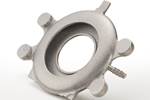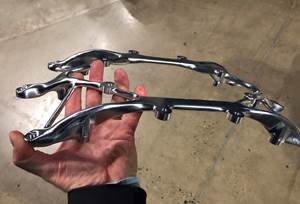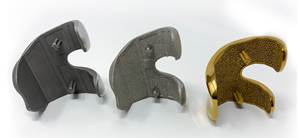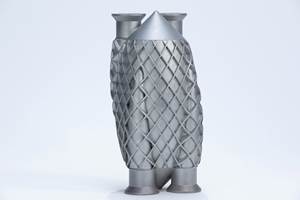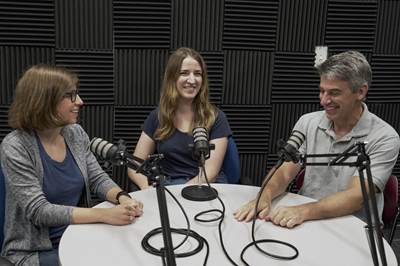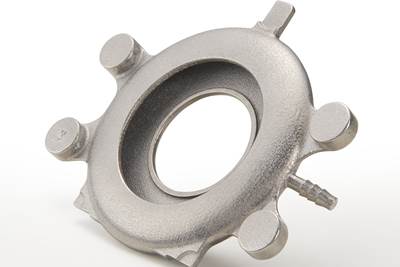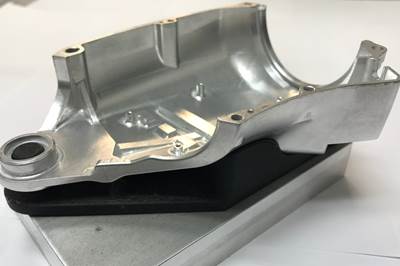In October of this year, additive manufacturers, 3D printing experts and would-be users of this technology gathered in Cincinnati, Ohio, for the sixth edition of the Additive Manufacturing Conference + Expo. (The event this year was also colocated with the inaugural Top Shops Expo, hosted by Modern Machine Shop and several sister brands.)
Held annually since 2014 (with one skipped year in 2020), the Additive Manufacturing Conference has always had a significant emphasis on production through additive manufacturing (AM). The 2021 program was no different, but this year the issues surrounding AM “production” were noticeably expanded beyond the scope of the 3D printer itself. The message was clear: 3D printing technology is capable of production, but now the entire additive manufacturing ecosystem must evolve to support it.
Shortly after the conference concluded, I recorded an episode of the AM Radio podcast with my cohosts Peter Zelinski and Julia Hider in which we discussed five major themes that emerged during the event. Listen to that conversation below (or wherever you get podcasts), or read on for a brief summary.
- 3D printing represents a solution to supply chain difficulties. Several speakers noted the use of 3D printing in response to shortages caused or exacerbated by the covid-19 pandemic. While printing needed items can be a rapid, first response to a crisis, large production volumes are still largely better suited for processes like injection molding. The right role for 3D printing in the supply chain may be a collaboration with conventional manufacturing, as a means of producing initial runs, spare parts and emergency supplies.
- We don’t have all the people we need in AM. Multiple speakers pointed out gaps in the additive manufacturing workforce related to skills, diversity and mindset. One of the earliest speakers devoted an entire session to describing the culture shifts that need to happen to support AM for production within an established organization; another called out the mental blocks that can prevent engineers from designing effectively for the additive process. A key takeaway? Additive needs more than just additive experts. Machinists, CEOs, materials scientists, accountants, data scientists and more will all need to be involved to advance AM for production.
- Additive manufacturing disruption hasn’t slowed. While AM has become an established, accepted method in industries like aerospace and medical, it is still expanding outward. The Cool Parts Showcase, a display area on the expo floor highlighting finalists in a 3D printed part contest, exemplified this trend with entries that included everything from bioprinted replacement bone to orthotic/prosthetic devices to small-scale hydropower systems. Even as it matures, AM continues to disrupt new industries and applications.
- Tooling is still relevant. Despite a heavy emphasis on direct 3D printing of end-use production parts, tooling continues to be a valuable application. Speakers talked about the injection molding benefits achieved from conformal cooling, the ability to customize large cast components with 3D printed polymer tooling, and the importance of not overlooking “boring” jigs and fixtures in pursuit of adoption.
- It’s time for the cost conversation. Building the business case for AM was top of mind at this year’s conference, compared to past events where technology readiness might have been the primary concern. Speakers discussed comparison tools for evaluating AM versus other manufacturing methods; trends in material pricing; simulation and planning tools; and what will need to happen for additive manufacturing to reach full commercialization at scale.
The next edition of the Additive Manufacturing Conference will take place in September 2022 colocated with IMTS—The International Manufacturing Technology Show.
Related Content
Using Topology Optimization to Lightweight: A Paradox for Machining
Today’s computer software can just as easily generate lightweight shapes for subtractive processes as it can for additive ones, but it increases cost and waste to make them.
Read MoreAdditive/Subtractive Hybrid CNC Machine Tools Continue to Make Gains (Includes Video)
The hybrid machine tool is an idea that continues to advance. Two important developments of recent years expand the possibilities for this platform.
Read More4 Ways 3D Printing Is Changing Medical Implants
Additive manufacturing provides new ways of making medical implants, but its impact is greater than this. How 3D printing is changing medical manufacturing and improving patient outcomes.
Read MoreThe Cool Parts Showcase Seeks Innovative 3D Printed Parts
Do you solve problems with 3D printing? Enter your 3D printed parts in this contest from The Cool Parts Show.
Read MoreRead Next
Explore Additive Manufacturing with AM Radio
Additive manufacturing editors Stephanie Hendrixson, Peter Zelinski and Julia Hider talk industrial 3D printing on a new podcast.
Read MoreThe Value of a "Pathfinder Part" for Additive Manufacturing
Implementing additive manufacturing means starting somewhere. Seeking out the right pathfinder part can illustrate valuable lessons about the advantages of this technology.
Read MoreFive 3D Printing Trends Mirrored in Machining
The underlying drivers of additive manufacturing’s advance are increasingly easy to spot on automated CNC machine shop floors.
Read More

.jpg;width=70;height=70;mode=crop)

